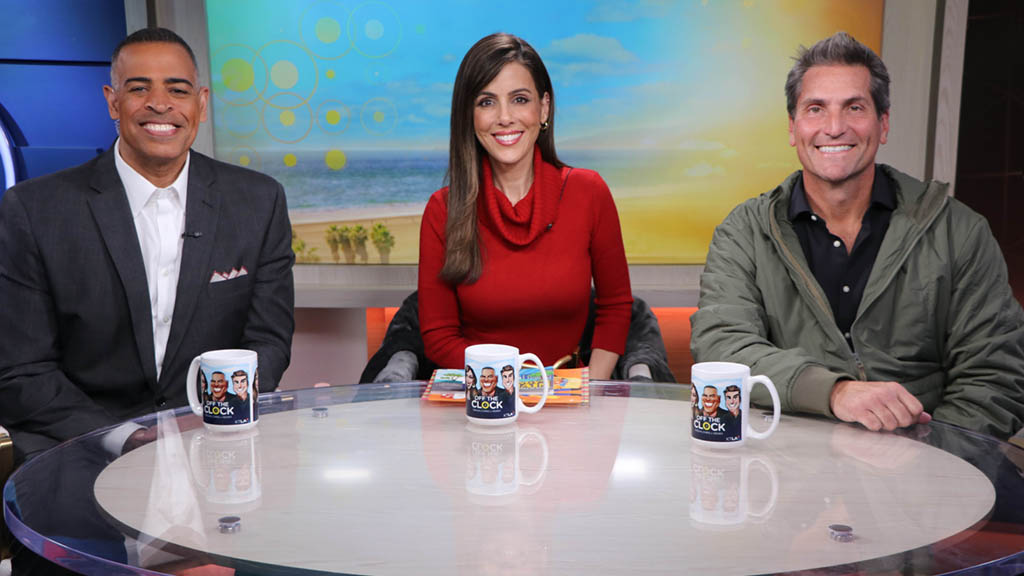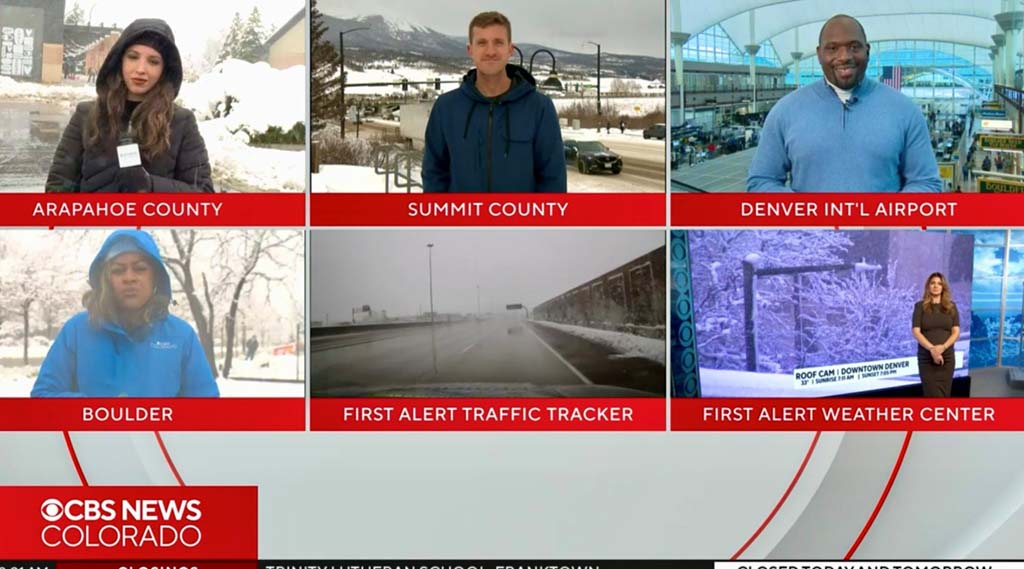24/7 Stations? Local Outlets Increase Output
Digital platforms allow local broadcasters to thoroughly connect with community

Stations may never get to be true 24/7 local news outlets, but there are many out there that have that model in mind as they crank out more and more local programming — both on linear TV and on their digital platforms. Netflix and Hulu might do great entertainment, the thinking goes, but they hardly produce content targeting viewers in a specific market.
So, stations load up on content — news, talk, true crime, documentaries — that speaks directly to viewers in their community and that those audiences might not get anywhere else.
KTLA Los Angeles, for one, puts out a stunning 112 hours a week of local programming, including weekday news from 4 a.m. to 2 p.m., then a talk show featuring station talent and then local news again from 3 to 7 p.m. After The CW primetime airs from 8 to 10 p.m., it’s another 90 minutes of weeknight news on the Nexstar Media Group station.
“Controlling our own destiny is really important — that’s what we are working very hard to do,” KTLA VP and general manager Janene Drafs said. “We may not be 24/7, but the more control we have of our content, the better suited we are to the changes that are happening so rapidly.”
Stations are adding more local fare on traditional TV, such as the seven-hour weekday morning behemoth that launched on KCAL Los Angeles last year, and on streaming, such as WNBC New York’s Today in New York 7 a.m. program that premiered on FAST channel NBC New York News in January. When WWJ Detroit launched local news last year, the newsroom, built for the modern era, touted a streaming-first mentality.
“The cord-cutting audience is larger and larger and larger, and some do not consume news on linear,” CBS Stations president Jennifer Mitchell said. “This is something we absolutely need to do to meet the audience where they are.”
Growing FAST
With their linear schedules typically carved up by network and syndicated commitments, stations are seeing the most room to grow on their secondary platforms. Besides its 45 hours a week of local linear programming, WTVF Nashville offers viewers another 17 hours of original local fare on its NewsChannel 5 Plus subchannel. That includes MorningLine, from 8 to 9 a.m. four days a week, and SportsLine, from 8 to 9 p.m. three nights a week. Both see viewers call in to ask questions and share their thoughts.
Broadcasting & Cable Newsletter
The smarter way to stay on top of broadcasting and cable industry. Sign up below
Capitol Broadcasting’s WRAL Raleigh streams 24/7, and acquired a religious station in the market then converted it to a news channel.

In the NBC group, WMAQ Chicago recently launched a 7 a.m. newscast on its FAST channel, and KNBC Los Angeles offers a FAST newscast at 9 a.m. “Most of our markets have launched a FAST-only newscast of some kind,” NBCUniversal Local director of streaming news channels Angela Grande said.
WTTG Washington has 88½ hours of news a week on linear and debuted a two-hour weekday show, Fox 5 Live Zone, in late January on the Fox Local app. Radio personality Guy Lambert hosts the current-affairs talker. “We’re live all the time anyway,” WTTG VP of news Paul McGonagle said. “It just gives us another platform.”
Streaming offers a different model than linear. Multiple newsroom chiefs spoke of a “conversational” vibe to their live, local programming on streaming. “We can have a conversation with the viewer about what they’re seeing, instead of the 1:30 package and move on,” said McGonagle. “It gives us the time to tell great stories.”
A nonlinear newscast at NBCU might run for a quick 13 minutes, said Meredith McGinn, executive VP, NBCU Local Media, multicast networks and original programming. Besides original reporting, a station might take a block of news that was produced earlier, take out some elements that are less relevant as the day goes on, such as traffic, and update other timely items, such as weather.
“We’re experimenting with formats, in addition to length,” McGinn said.
Users watching digital platforms might not expect the traditional news setup on those platforms. WTVF, part of E.W. Scripps, has a weekly show in the works that is centered around positive stories that run in its newscasts. WTTG Washington, part of Fox Television Stations, has a couple of shows in development. McGonagle described them as “live but not talking-head live.”
Crime Pays
Several stations are finding those channels to be a good place for true crime and other documentary-style programs. In the NBCU group, WMAQ Chicago has Scene of the Crime and WCAU Philadelphia has Somebody Knows Something.
WTTG’s McGonagle said true crime has done “extremely well for us” on the Fox Local app. In mid-March, a new special about a D.C.-area doctor killed in a carjacking, The District of Carjacking, premiered. “We spend a lot of time going deeper into those issues,” he said.
There is also local growth on the linear side. After a split from The CW, eight CBS-owned stations went independent last fall, and several launched primetime news. Also in the CBS group, KCAL’s 4-11 a.m. weekday block launched in January 2023. “It’s been very good growth for that station,” Mitchell said, noting a 78% uptick in the 6-7 a.m. hour, compared to what was on before the newscast.
Live and Local
Station managers said viewer and user demand for live programming remains unfulfilled. KMGH Denver is live from 9 a.m. until noon on weekdays on Denver 7 Plus. Brian Joyce, VP and general manager, mentioned “more in-depth coverage around stories” on the OTT platform.
WPRI Providence added a Spanish-language newscast, 12 Informa, online last year.
The CBS-owned stations are now set up so an anchor, reporter and producer are available at most times of the day and are ready to go live if and when news breaks. “We have the ability to stand up and deliver live breaking news at a moment’s notice,” Mitchell said. “It’s now in the DNA. We are no longer resource-challenged in that area.”

Many stations aren’t in a position to increase headcount while adding local content. Everyone in the KMGH newsroom contributes to Denver 7 Plus, but dedicated staff was hired before launch. “We did not want to spread our journalists so thin that they can’t get to it,” said Joyce.
Drafs mentioned KTLA adding eight to 10 hours of content over the last half-dozen years. Headcount has increased at a more modest rate. The station’s 2 p.m. Off the Clock program is an example of how KTLA cranks out more with a mostly level number of people. The early-morning anchor and producer teams finish their duties at 7 a.m., then head off to tape Off the Clock.
“We’re constantly examining workflow that works and can serve all of those needs without burning out the staff,” said Erica Hill-Rodriguez, KTLA news director. She said she’s heard complaints about increased workloads in the newsroom her entire career. “That’s been going on in news forever,” she said. “It’s a difficult job.”
Not every station will see the merit of adding original news to a secondary platform. A station that’s No. 4 in their market in the news derby can’t expect to draw enough of a crowd to an original online newscast to justify the cost. “A weak station where they don’t have strong news, they’re gonna have a tough time,” Bill Hague, executive VP at consultancy Magid, said. “Strong news stations with a strong brand are going to have an easier time.”
The Revolution Will Be Televised
Most stations plan to keep on increasing their local output. Sure, it’s more stress for staffers, but a deeper programming portfolio gives them more room to chase down passion projects.
“It’s another revolution in our industry,” McGonagle said. “It’s scary and exciting at the same time.”
One might think KTLA’s local schedule is maxed out, but that’s not the case. The station has a few new shows in the works, and is running them on the KTLA Plus app to see if they draw an audience. “We’ll spend some time with it and grow it, and if we think it has a place on linear, we’ll move it to linear,” Drafs said. “We have high hopes that one or two, or all three, will be successful and can take the place of syndication.”
Michael Malone is content director at B+C and Multichannel News. He joined B+C in 2005 and has covered network programming, including entertainment, news and sports on broadcast, cable and streaming; and local broadcast television, including writing the "Local News Close-Up" market profiles. He also hosted the podcasts "Busted Pilot" and "Series Business." His journalism has also appeared in The New York Times, The L.A. Times, The Boston Globe and New York magazine.

